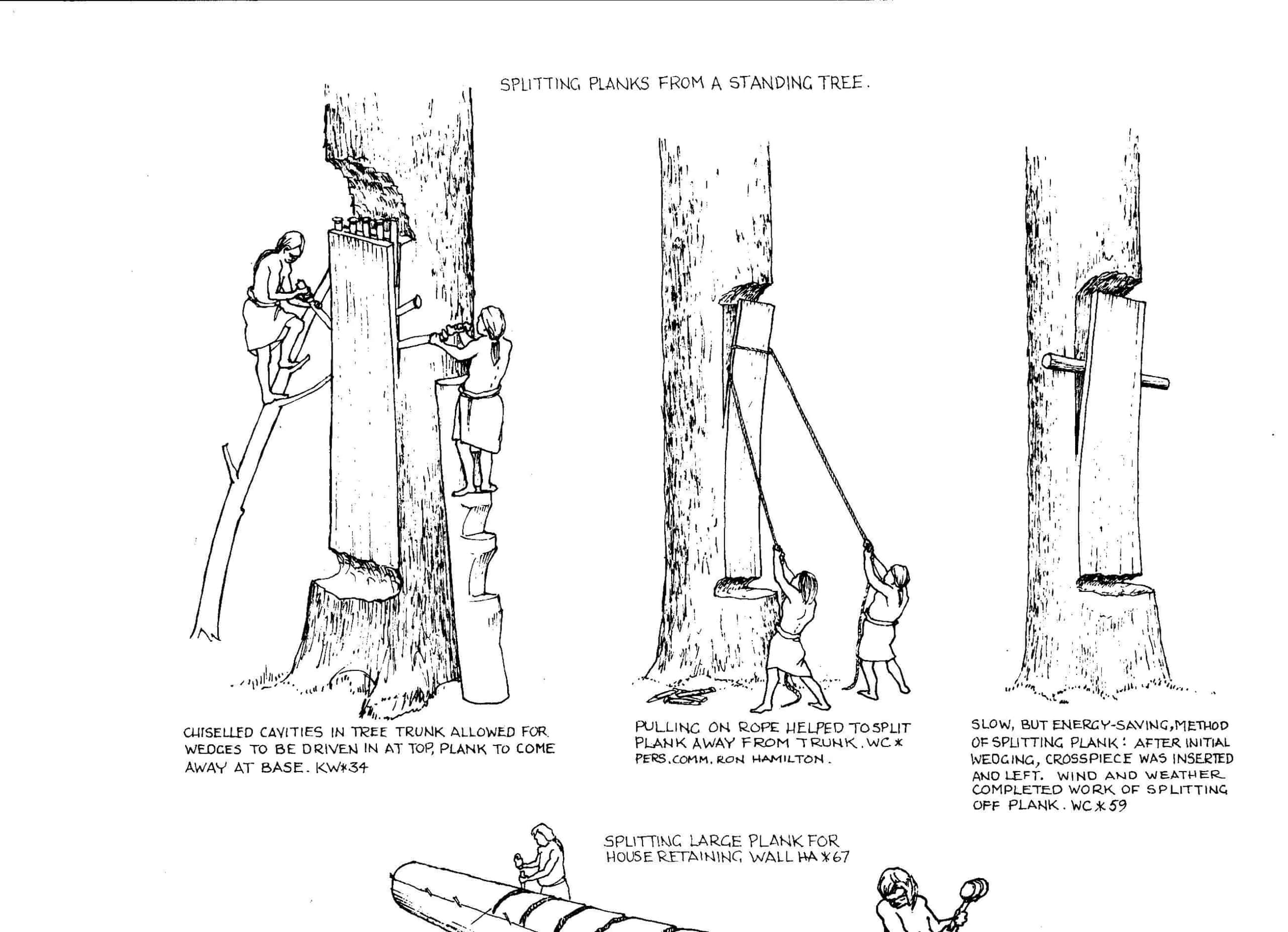Cedar: Tree of Life
Cedar Artifacts- I notice, I think, I wonder…
an engaging way to start an inquiry/learnings about cedar
Cedar: Think, Notice, Wonder
Cedar Weaving
Harvesting Cedar
Special Note: There are protocols that go with collecting cedar bark. Some things to consider about cedar collection is that the people who collect cedar are from the local nation, have been taught from an elder, know how and when to do this without harming the tree in that specific area. Cedar is considered sacred for many.
Cedar Dug out Canoe: K’ómoks First Nation
Members of the K’ómoks First Nation, under the guidance of Nuu-chah-nulth carver Joe Martin, are practicing their traditional skills by making a new dug out cedar canoe in the fall of 2021. Joe Martin, also known by his traditional name, Tutakwisnapšiƛ, grew up learning to carve from his father and he shares his knowledge with the K’ómoks members, including Sean Frank and Trevor Hardy.
Here are some pictures of the recent canoe steaming:
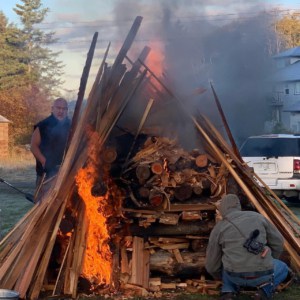
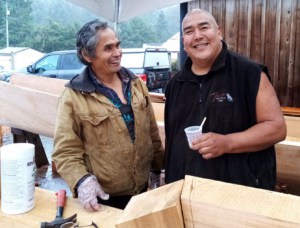
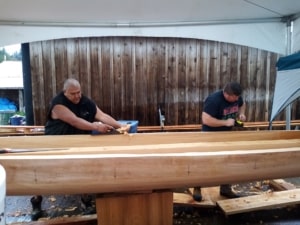
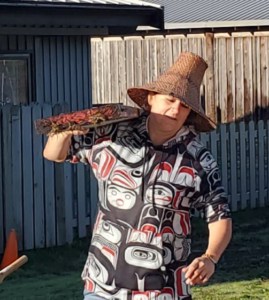
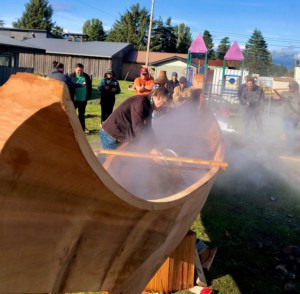
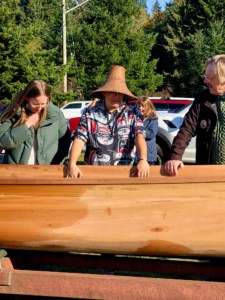
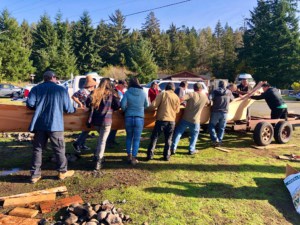
Kits from SD71 Learning Resource Center that contain cedar artifacts: (search on Destiny with the following titles)
Cedar Bark Harvesting Kit
A display of photographs, b+w drawings, and cedar samples help illustrate the steps traditionally used by First Nations peoples in the harvest of cedar. Traditional cedar bark uses: hats, baskets, blankets, ceremonial regalia, nets, masks, mats, headbands and clothes. This kit can be used in support of Aboriginal science and social studies learning outcomes.
Bentwood Box
Several cedar items, bentwood box, ladle, rope, eagle head, bailer, headbands, bowl
Totem Poles of the Comox Valley (this could help facilitate an excellent field trip around the valley looking at all the totem poles)
This resource features photographs and information about the totem poles of the Comox Valley. Totem poles are a traditional way of telling the stories of Aboriginal families and clans, and of keeping records of important historical events. The six West Coast First Nations that carved totem poles before the arrival of the European explorers were the Haida, the Nuxalt, the Kawkwaka’wakw, the Tlingit, the Tsimshian and the Coast Salish people.
Coast Salish Realia
This kit contains samples of Coast Salish carvings, baskets, a spindle whorl, and tools.
Coast Salish Artifacts
“Keepers of the Earth” a collection of native stories and environmental activities for children, 2 CDs “Rising from the ashes…” and “One nation One Voice: songs of the Kwakwaka’wakw”, 1 woven cedar hat, 3 wooden carvings -kingfisher, salmon, and loon.
Indigenous Canoes of Canada Models
Carved by Stephen Hunt, a member of the Kwakiutl Band of Fort Rupert, B.C. One model is decorated with a Thunderbird image, the mythical creature considered to be the most powerful of all spirits. It is believed that the Thunderbird’s powers came from the carved appendages on his head. The other canoe is decorated with the eagle image.
Cedar the Tree of Life Kit
Bark and rope artifacts along with cedar reader booklest and Little Cedar, Big Cedar by Pam Holloway
The Story of Cedar (short clip below) by Herb Rice
For the full documentary click on link directly below:
The Story of Cedar, Bark Pulling and Cedar Hat Weaving
Published on Dec 9, 2012
From the moment of birth, to the time of passing, cedar has traditionally played a vital role in the life of the First People of the Pacific Northwest.
This 30min documentary tells the story of cedar, how the bark is stripped from the cedar tree and prepared for cedar weaving (hats) and discusses the art of cedar weaving and the affect this workshop had on the participants. Project was facilitated by Maria Sampson. The video was produced by Louise McMurray and the Cowichan Aboriginal Film Festival and directed, shot and edited by Phil Ives.
Cedar – Tree of Life Kit – found in SD71 LRC -primary focused
Contents: books: The cedar club forest detectives — Making a canoe — Cedar — Making a drum — The western red cedar — The cedar tree: the heart of our people (2) — Cedar – tree of life — The little cedar tree — Little cedar, big cedar — 10 booklets: The bentwood box — French books: La technologie des Premières Nations — Grand-mère, gardienne de notre passé — Les Premières nations — Sun design colouring page — Rain design colouring page — 20 photo cards: cedar and its uses — 6 photo cards: steps to make cedar rope — 2 bundles of cedar strips, narrow — bundle of cedar strips, wide — 2 bundles of cedar rope — cedar plank.
Growing Your Green Heart (primary focused)
A guided imagery – fantasy journey to find the seed in your heart. One of the many activities from this book, Keepers of Life. Could be followed up by a writing, drawing or painting activity of the plant they imagined themselves to be.
Cedar the Tree of Life
From Nelson Literacy Grade 4 student book A
Cedar by Hilary Stewart
This book by Hilary Stewart has many hand drawn examples of cedar artifacts and how they were made and used. Below are some examples from the book that Aboriginal Education has compiled for teaching purposes:
Big Houses of the Northwest Coast – 3 types
Fishing Tools
Fishing drawings by Hilary Stewart
The Story of Cedar
This video showcases what role a cedar plays in the culture of Shishalh people. It played in the Tems Swiya museum as part of the tree of life texemay exhibit during the 2015 Sechelt Arts Festival.
Making a Cedar Rose
Making a cedar rose from Hakwush on Vimeo.
Nuu-chah-nulth Canoe Steaming
Master Nuu-chah-nulth canoe carvers Joe and Carl Martin steam a dugout canoe on Chesterman Beach, Tofino, Vancouver Island, British Columbia. Film and Narration by Jacqueline Windh.

